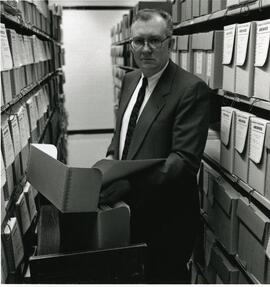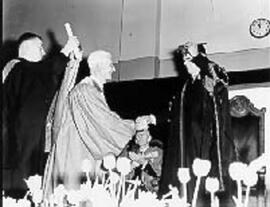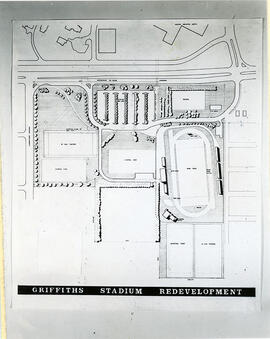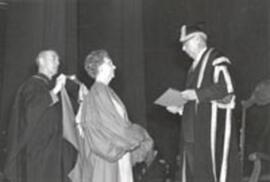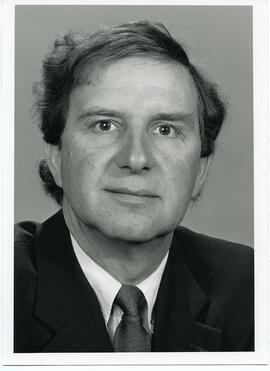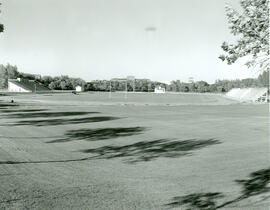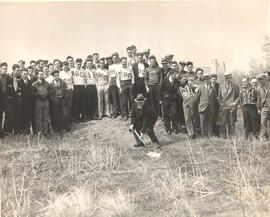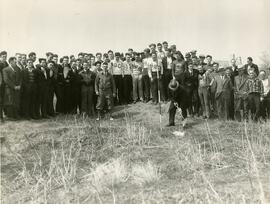- A-8832
- Item
- [ca. 1995]
Stan Hanson, Head Archivist, stands in the University Archives stack area with a file open in his hand.
Bio/Historical Note: Stanley Duane Hanson was born in 1942 in Prince Albert, Saskatchewan. He received a BA degree from the University of Saskatchewan in 1964 and a MA degree in history from the University of Saskatchewan, Regina Campus, in 1972. Hanson began his career in 1964 as an archival assistant in the Saskatchewan Legislative Library. Two years later he joined the staff of the Saskatchewan Archives Board. In January 1970 he was appointed University Archivist at the University of Saskatchewan. He was not only the first person to hold that position, but he was also, briefly, the university archives’ sole employee. For all but the last eight years of his career with the university, with the occasional exception of a few transitory contract positions, the archives had a full staff complement of two. His MA thesis, completed in 1972, was on the 1931 Estevan strike and riot; he was subsequently invited to write a chapter for Irving Abella’s On Strike: Six Key Labour Struggles in Canada, 1919–1949 and frequently was a guest lecturer in Canadian labour history classes. With his good friend and colleague Don Kerr, Stan co-authored Saskatoon: The First Half-Century, considered by University of Victoria professor Alan Artibise to be “a particularly able and important addition to Western Canadian urban studies,” with “dimensions of depth and comprehensiveness that few urban biographies can match.” Hanson also co-edited, with professor Walter Kupsch, Gold and Other Stories: Prospecting and Mining in Northern Saskatchewan. In addition, Hanson was the sole or co-author of twenty articles and chapters in books or books, and curator of eleven exhibitions. He was elected to the first executive of the Association of Canadian Archivists (ACA) and served on various committees of the ACA, the Canadian Council of Archives (CCA), and the National Archival Appraisal Board (NAAB). Hanson was elected as both chair and director of NAAB, was appointed to both the Planning and Priorities Committee and the Task Force on a Union List of Canadian Archival Holdings for the CCA, and was appointed or elected to six positions with the ACA. He helped establish both the Saskatchewan Council of Archives and the Saskatchewan Archivists’ Society, and served in various elected capacities for both these organizations. He was invited to give numerous lectures at archival conferences, particularly in the field of monetary appraisal. He was invited by the CCA to author what has become the standard work on monetary appraisal, and was co-editor of Canadian Archives in 1992. Hanson had just completed work on another manuscript at the time of his death. He was awarded the status of Archivist Emeritus and was given honorary membership in the ACA at the time of his retirement in December 1999. Hanson died in Saskatoon in 2001.



